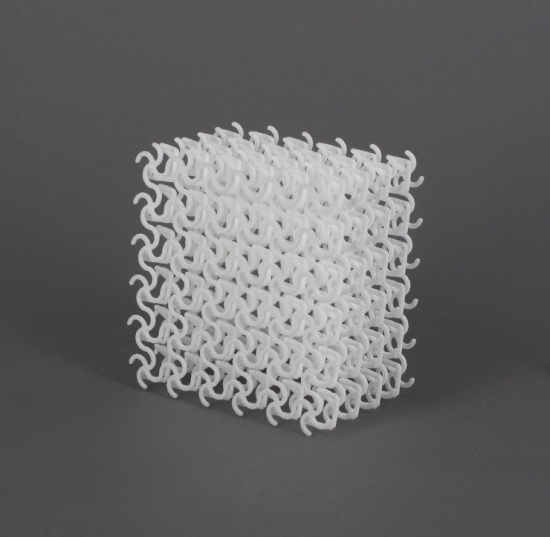Many people first became aware of 3D printing when it was reported that a functioning gun had been manufactured using the method. This was perhaps an inauspicious way to enter the public consciousness but it at least had the effect of making people sit up and take notice.

Subsequently the future of 3D printing has been widely discussed and, while the process is still in its infancy, the exciting possibilities are beginning to emerge. What is becoming clear is that 3D printing is already transcending its origins in the world of prototype design and is, slowly but surely, making its presence felt in the wider world.
Not surprisingly perhaps, 3D printing has already made its debut on the catwalk. Fashion designer Iris van Herpen, who learned her trade under Alexander McQueen, has produced nine 3D printed pieces in materials including plastics and rubber.
She says the experience has completely changed her thinking, freeing her from physical limitations and allowing her to include more detail than is possible by hand or sewing machine. In fact it has encouraged her to think of her workspace not as a studio but as a laboratory where every complex structure is possible.
Taking the process a step further is Janne Kyttanen, founder of the Netherlands based design company Freedom of Creation. He has designed a range of women’s shoes which can be downloaded and printed at home. The wedges are available in four different styles and any shoe size.
Kyttanen believes that 3D printing has the potential to change retail fundamentally. Given the impact of online shopping on commercial property vacancy rates it is worth considering what he has to say about the possibilities he foresees.
“Today we are bound by the products in physical stores. Personalisation is difficult and rare.
“Online shopping helps a bit, but it’s still a static 2D experience. 3D printing totally changes the game.
“The consumer now also becomes a designer and manufacturer,” he told Wired.co.uk.
Today 3D printers are expensive and so Kyttanen’s shoes are currently restricted to a niche luxury market. However this is certain to change and, as 3D printing inevitably become widespread, Kytannen believes it will change shopping forever.
So if it is possible to design and assemble catwalk fashions and shoes using 3D printers, is it conceivable that one day commercial buildings could be built in the same way? Well that possibility may not be as remote as it sounds. Recently California studio Smith|Allen completed the world’ first 3D printed architectural structure.
Measuring 10 ft x 10 ft x 8ft the igloo shaped building consists of 585 printed pieces. It took the printers two months to print the bio-plastic components but just four days to assemble the building.
There are currently a number of other, more ambitious, projects in the pipeline as architects compete to make the most of the emerging technology. These include a single-storey structure by UK studio Softkill and a two-storey residential property by Dutch firm Universe Architecture. Another project will see Italian engineer Enrico Dini create the first 3D printed inhabitable building using synthetic stone.
So, the possibility of seeing a commercial property assembled via 3D printing cannot be far away. Speaking to Dezeen Bryan Allen, whose studio’s plastic igloo demonstrates the potential of the process, said that new printers and materials will ‘push the envelope of architecture in general.’
“To us the 3D printer is right on the cusp of transitioning from a toy to a tool, it can make things, real design and real architecture,” he said.